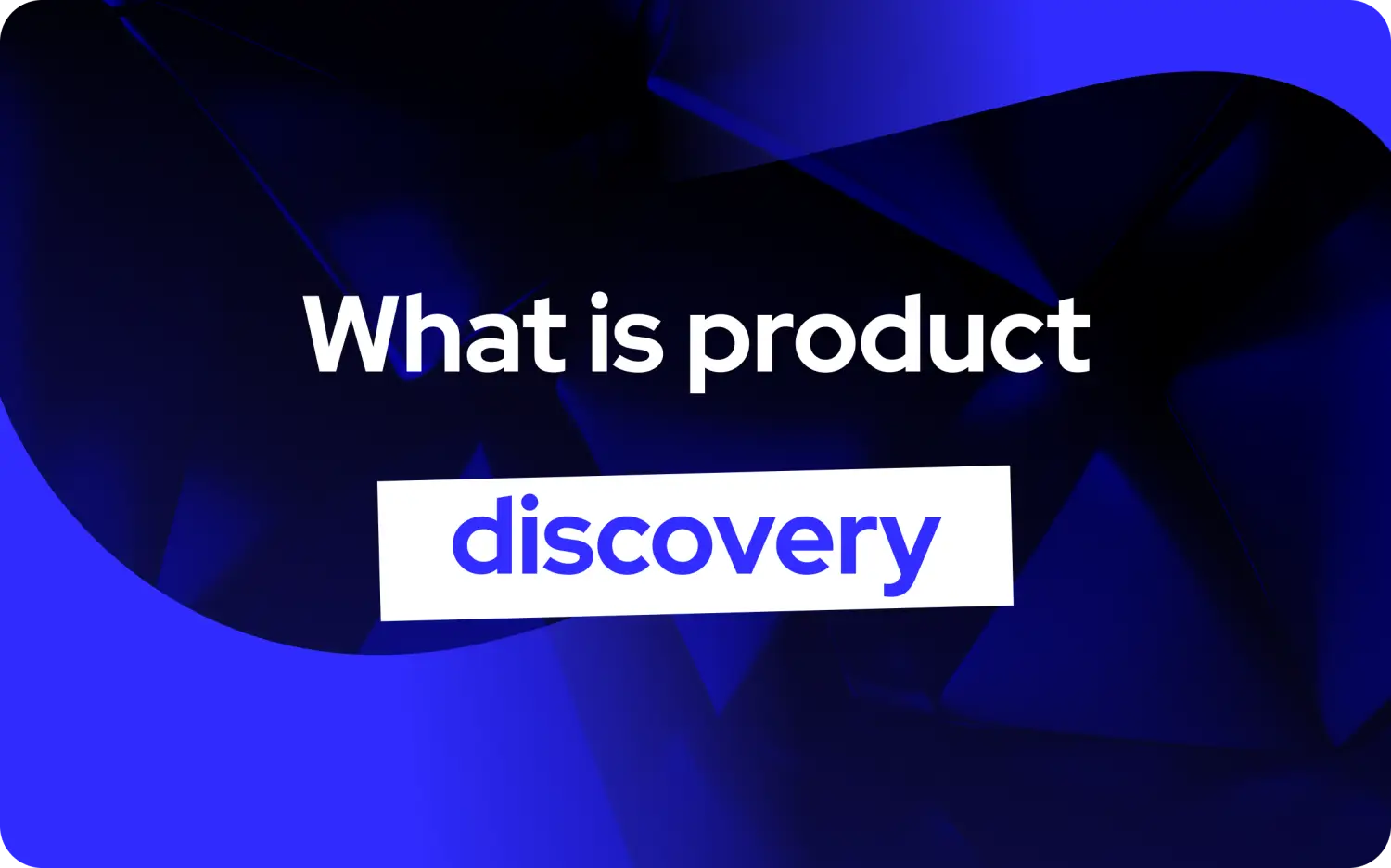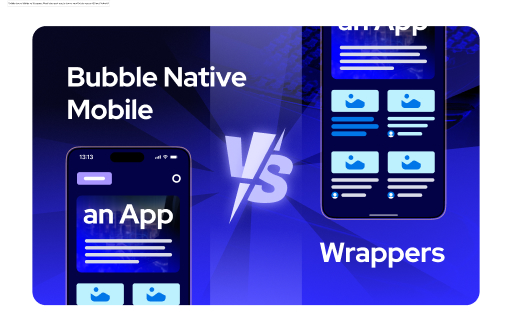
Want to turn your SaaS idea into reality fast, even if you can't code? Here's how to launch your Minimum Viable Product (MVP) in just 30 days:
- Define your core problem and solution
- Use no-code platforms like Bubble.io
- Focus on 1-5 essential features
- Test your idea with a landing page
- Build fast, launch, and gather feedback
Key steps:
- Week 1: Plan and design
- Week 2-3: Build core features
- Week 4: Polish and prepare for launch
Remember: Your MVP doesn't need to be perfect. Launch quickly, learn from users, and improve.
| Tool | Best For | Starting Price |
|---|---|---|
| Bubble.io | Web apps | $29/month |
| Webflow | Websites | $12/month |
| Softr | Internal apps | $49/month |
| Airtable | Databases | Free tier available |
| FlutterFlow | Mobile apps | $30/month |
By using no-code tools, you can test your SaaS idea quickly and cheaply. Focus on solving one problem well, and be ready to adapt based on user feedback.
Related video from YouTube
What Makes a Good SaaS MVP
Want to launch a SaaS MVP in 30 days? Let's break it down.
Pick Your Main Features
Your MVP needs to solve ONE problem really well. That's it.
Take Dropbox. Their MVP did one thing: sync files across devices. Simple, but game-changing.
So, how do you choose?
- List 3-5 features that solve your users' biggest headache
- Cut anything that's not 100% necessary
- Double-check: Does each feature support your core promise?
Remember: You're not building the your final product. You're laying the foundation to get your first paying customers.
Set Clear 30-Day Targets
30 days isn't much. You need a game plan.
Here's a sample roadmap:
| Week | Goal |
|---|---|
| 1 | Lock in features, sketch wireframes |
| 2 | Build core stuff with no-code tools |
| 3 | Piece it all together, start testing |
| 4 | Make it pretty, final tests, launch prep |
Pro tip: Break these down even further. "Build core stuff" could mean "Set up user login" and "Create basic dashboard".
Check Tech Requirements
Before you start building, know your tools.
Ask yourself:
- Which no-code platform fits best? (Bubble for web, Flutterflow for mobile)
- What third-party services do you need? (Payment processors, email tools)
- Where will you host this thing?
As UX expert Adam Fard puts it: "Validating your SaaS idea is an essential step before investing time and resources into development."
In other words: Make sure you've got the right LEGO pieces before you start building.
Plan Your No-Code MVP Build
Want to launch your SaaS product fast? Let's break down how to plan your no-code MVP build for a 30-day sprint.
Test Your Market
First things first: make sure people actually want what you're building. Tom Louwagie, founder of Minimum Code, puts it bluntly:
"Conducting thorough market research is essential to ensure there's demand for your product before investing time and resources."
Here's how to do it:
- Talk to potential users: Chat with at least 20 people about their problems and needs.
- Check out the competition: Use G2 or Capterra to spot gaps in what's already out there.
- Test the waters: Whip up a quick landing page with Softr to see if people are interested.
Sort Features by Priority
You've got limited time, so focus on what really matters. Use the MoSCoW method:
- Must-have: The core stuff that solves the main problem
- Should-have: Important, but not deal-breakers
- Could-have: Nice extras that can wait
- Won't-have: Leave these out for now
For example, if you're building a project management tool, task creation is a must-have. Fancy integrations? Maybe a should-have or could-have.
Pick Your No-Code Tools
Choosing the right tools can make or break your MVP. Here are some top picks:
| Tool | Best For | Starting Price |
|---|---|---|
| Bubble.io | Web apps | $29/month |
| Webflow | Websites | $12/month |
| Softr | Internal apps | $49/month |
| Airtable | Databases | Free tier available |
| FlutterFlow | Mobile apps | $30/month |
Pick tools that let you build fast and tweak easily based on what users tell you.
Make Your 30-Day Plan
Here's a rough timeline to get you started:
1. Week 1: Plan and Design (Days 1-7)
Get your feature list nailed down, sketch out how it'll look, and set up your workspace.
2. Weeks 2-3: Build the Core (Days 8-21)
This is where the magic happens. Build your main features, hook up any necessary third-party services, and start some basic testing.
3. Week 4: Polish and Prep for Launch (Days 22-30)
Make it look good, test it thoroughly, and get your marketing ducks in a row.
Build Your MVP
Want to turn your SaaS idea into reality? Here's how to build your MVP in 30 days without writing code.
Week 1: Start and Design
First, get to know your no-code platform. William Jakfar, who used Bubble.io for his MVP, says:
"The goal is to find the possibility and gather the right resources. You need to define your MVP as a common business term."
Sketch out your app's design. Use Figma or even pen and paper for wireframes. Keep it simple and functional.
Week 2: Build Main Features
Time to start building. Focus on core features that solve your users' main problem. Most successful SaaS MVPs have 1-5 features, according to Product Plan.
Building a project management tool? Start with task creation and assignment. Save the fancy stuff for later.
Week 3: Connect and Test
Make sure everything works together. Connect features, set up third-party services, and start testing.
Use Zapier to link different parts of your app without coding. For example, create tasks in your app when new emails arrive.
Week 4: Get Ready to Launch
Final stretch! Polish your MVP, do quality checks, and prep for launch. Set up analytics to track user behavior from day one.
Create a simple landing page explaining your product. Tools like Softr can help you do this quickly.
Best No-Code Tools to Use
Here's a quick look at some popular no-code tools:
| Tool | Best For | Standout Feature | Starting Price |
|---|---|---|---|
| Bubble.io | Web apps | Advanced customization | $29/month |
| Webflow | Websites | Professional design | $12/month |
| Adalo | Mobile apps | Native app feel | $50/month |
| Airtable | Databases | Flexible data handling | Free tier available |
Your MVP is just the start. The real work begins after launch when you get user feedback and improve. So focus on solving the core problem and get your product out there!
Set Up Your Build Process
Want to turn your SaaS idea into reality? Let's set up a build process to launch your MVP in 30 days - no coding needed!
Set Up Your Workspace
First, get your digital house in order:
- Pick your no-code platform. Bubble.io for web apps, Adalo for mobile.
- Create a project folder.
- Set up project management. Trello or Asana work great.
- Create boards for each week of your 30-day sprint.
Design Your Screens
Time to make your app look good and work well:
- Start with pen and paper sketches.
- Move to Figma for digital wireframes.
- Focus on core screens that solve your main user problem.
For a task management app, key screens might be:
- User dashboard
- Task creation form
- Task list view
Build Core Features
Let's bring those designs to life! Focus on essential features. Using Bubble.io? Here's a quick guide:
- Set up your database structure
- Create main pages
- Add interactive elements
- Connect pages to your database
Aim for functional, not perfect. You can refine later based on user feedback.
Test Everything
Before launch, make sure everything works. Here's a quick checklist:
- Functionality: Features working?
- User flow: Easy to navigate?
- Data handling: User data stored and retrieved correctly?
- Performance: Smooth with multiple users?
Test on different devices and browsers. BrowserStack can help with this.
30-Day Schedule
Here's a breakdown of your 30-day sprint:
| Week | Focus | Key Tasks |
|---|---|---|
| 1 | Planning & Design | Choose tools, create wireframes |
| 2 | Core Build | Set up database, build main pages |
| 3 | Feature Development | Add interactivity, connect pages to database |
| 4 | Testing & Polish | Run tests, fix bugs, prepare for launch |
This schedule is a guide. Be flexible and adjust as needed. Remember: progress, not perfection.
How to Launch
You've built your SaaS MVP in 30 days without coding. Now it's time to launch. Here's how to get your product out there and start gaining users.
Pre-Launch Tasks
Before you go live, make sure you've got these bases covered:
- Set up a smooth onboarding process
- Install analytics to track user behavior
- Create easy feedback channels
- Build a landing page that sells your product
- Get your legal docs in order
Final Testing
Don't skip this part. Test everything:
- Does each feature work?
- Can a new user navigate easily?
- How does it look on different devices?
- Is user data safe?
- Can it handle multiple users?
Use tools like BrowserStack to test across platforms quickly.
Going Live
1. Soft launch
Start small with beta testers. Evernote did this and ended up with a long waiting list before their full launch.
2. Listen to feedback
Use your beta group to spot issues.
3. Fix things fast
One founder put it this way:
"Your early adopter users will be fine with coming across issues and bugs, but they will NOT be fine with bugs that take weeks to correct."
4. Full launch
Once you're ready, open the doors to everyone.
Help Your First Users
Your early adopters are gold. Here's how to treat them:
- Write clear guides for common tasks
- Offer one-on-one calls for your first users
- Set up quick-response support
- Use their feedback to make your product better
Launch Day Checklist
On the big day:
- Do one last check of everything
- Make sure your team knows what to do
- Go live
- Watch for any problems
- Talk to your new users
- Take a moment to celebrate
Remember, launching is just the start. Be ready to learn and change based on what users tell you. As Reid Hoffman, LinkedIn's founder, said:
"If you are not embarrassed by the first version of your product, you've launched too late."
Your MVP is out in the world. Now it's time to grow and make it better based on real feedback.
After Launch: Next Steps
You've launched your SaaS MVP. Great job! But don't pop the champagne just yet. Now's when the real work begins.
Get User Feedback
Your early users are goldmines of info. Here's how to dig in:
1. In-app surveys
Throw in quick surveys using tools like Hotjar or Typeform. Catch users while they're using your product.
2. User interviews
Jump on calls with your power users. Get the nitty-gritty on their experience.
3. Monitor support channels
Keep your eyes peeled on support tickets and social media chatter.
Trevor Larson from Nectar HR puts it well:
"Collecting user feedback allowed us to see our shortcomings early on, and a willingness to accept criticism and incorporate it has garnered us a reputation for sincere customer-first service and made us more competitive."
Watch How It Runs
Keep tabs on your MVP's performance:
Track key metrics, set up error logging, and monitor server health. Use tools like Sentry for catching bugs and New Relic for keeping an eye on your app's performance as you grow.
Make Updates
Got feedback? Seen how it's running? Time to roll up your sleeves:
1. Prioritize issues
Squash those critical bugs first. Address the pain points your users keep mentioning.
2. Implement new features
Start small. Add high-impact features that align with your core offering.
3. Optimize performance
Look for ways to speed things up. A faster app = happier users.
One founder nails it:
"Your early adopter users will be fine with coming across issues and bugs, but they will NOT be fine with bugs that take weeks to correct."
Plan for Growth
As your user base grows, think ahead:
Make sure your no-code platform can handle more traffic. Consider upgrading or exploring more robust solutions. Start planning your next marketing push - maybe content marketing, partnerships, or paid ads. And think about where you might need extra hands, like in customer support or product development.
Tom Louwagie, founder of Minimum Code, drops this wisdom:
"Conducting thorough market research is essential to ensure there's demand for your product before investing time and resources."
Conclusion
Launching a SaaS MVP in 30 days without coding? It's doable with the right approach and tools. Here's how:
1. Start with a clear vision
Define your core offering and the problem you're solving. Focus on solving only 1 problem for 1 specific user type.
According to Bill Aulet, Author of “Disciplined Entrepreneurship”:
"You should not worry about being focused on too small a market. […] You want to start in a market where you have great ability to dominate in a relatively short time period."
2. Use no-code platforms
Tools like Bubble.io, Webflow, and Adalo let you build complex apps without coding. Speed to market is everything. Every day that you delay your launch is a day that you are not getting customer feedback and improving your product.
Speed matters specially if you are pre-revenue and are not paying yourself a salary yet. Time is literally money in this case.
3. Focus on essential features
Be ruthless with prioritization. Your MVP should tackle the core problem, nothing more. Use the MoSCoW method to sort features:
- Must-have
- Should-have
- Could-have
- Won't-have
4. Test and validate
Before building, validate your idea. Use tools like Softr to create a landing page and gauge interest. Do user interviews and surveys. Why? Most startups fail because they don't validate demand for their product.
5. Build fast, iterate faster
Aim for a working prototype in two weeks. Use the rest of the time to test, refine, and prep for launch.
6. Launch and learn
Your MVP launch is just the start. Be ready to gather and act on user feedback right away. Set up analytics to track key metrics like user engagement and retention.
Take "Travel AI" as an example. Using Bubble, the founder designed, built, and launched their MVP in weeks, quickly gaining market traction.
Building an MVP with no-code tools isn't just about speed and saving money. It's about making software development accessible to everyone. It lets entrepreneurs test ideas fast and improve based on real user feedback.
As you start your 30-day journey, keep this advice from the WeWeb team in mind:
"No-code platforms empower entrepreneurs to iterate quickly, test hypotheses, and validate ideas in a fraction of the time it would take with traditional development methods."
Your MVP is step one towards a successful SaaS product. Embrace the process, learn from users, and be ready to adapt. With grit and the right no-code tools, you can turn your SaaS idea into reality in just 30 days.
FAQs
Can you do SaaS without coding?
Yes, you can create a SaaS product without coding skills. No-code platforms have changed the game. Now, non-technical founders can build and launch their ideas without writing code.
Why is no-code SaaS development taking off?
1. Quick prototyping
No-code tools let you build and test your MVP fast. You'll save time and money.
2. Lower entry barriers
No need for a tech co-founder or pricey dev team to get started.
3. Faster launch
With no-code platforms, you can get your SaaS product out there in weeks, not months.
Here's a fun fact: Gartner says by 2025, 70% of new apps will use low-code or no-code tech. That's up from less than 25% in 2020.
Pietro Invernizzi from Stride.vc puts it nicely:
"No-code and low-code tools aren't about getting rid of code or engineers. They're about making coders' lives easier and letting everyone be a 'citizen developer.'"
Related posts

Ready to build your product?






.avif)


